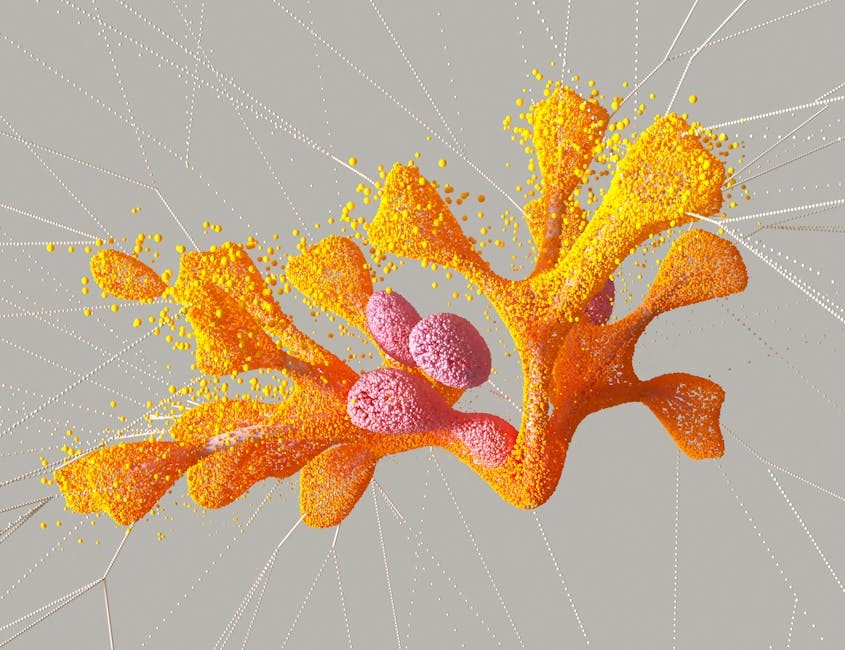Essentials of Biology PDF: A Comprehensive Guide
Embark on a journey through the fascinating world of life sciences with our comprehensive guide to “Essentials of Biology” in PDF format. This resource provides accessible and detailed information, covering key topics from cell structure to genetics, ecology, and evolution, perfect for students and enthusiasts alike.
Welcome to the study of essential biology, a fundamental science that explores the intricacies of life, from the smallest molecular components to complex ecosystems. Essential biology provides a foundation for understanding the natural world, covering key concepts vital for students and anyone interested in the life sciences. This field encompasses a wide range of topics, including cell biology, genetics, ecology, evolution, and molecular biology, each contributing to a holistic view of living organisms and their interactions.
Whether you are a student pursuing a career in science, a curious learner seeking knowledge, or an educator aiming to enhance your teaching materials, essential biology offers a wealth of information. Textbooks like Sylvia Mader’s “Essentials of Biology” and “Essential Cell Biology” by Alberts are valuable resources, providing accessible explanations, clear visuals, and comprehensive learning systems. These materials emphasize the latest research and offer tools for effective study and reference.
The aim is to provide a strong foundation in biological principles, encouraging a deeper appreciation for the diversity and complexity of life.
Key Concepts Covered in Essential Biology Textbooks
Essential biology textbooks cover a wide array of fundamental concepts necessary for understanding the science of life. These books typically begin with an introduction to the chemistry of life, exploring the essential molecules and compounds that form the basis of all living organisms. Cell biology is a cornerstone, detailing cell structure, function, and processes like cell division and communication.
Genetics and heredity are thoroughly examined, covering DNA, RNA, gene expression, and inheritance patterns. Ecology and environmental biology address the interactions between organisms and their environment, including ecosystems, biodiversity, and conservation. Evolutionary biology principles explain the mechanisms of evolution, natural selection, and the history of life on Earth. Molecular biology basics delve into the molecular processes within cells, such as DNA replication, transcription, and translation.
Many textbooks also include an overview of human biology, covering anatomy, physiology, and common diseases. These key concepts provide a comprehensive foundation for students and enthusiasts alike, fostering a deeper understanding of the biological world.
Cell Biology Fundamentals
Cell biology fundamentals encompass the study of cells, the basic units of life. These fundamentals begin with understanding cell structure, including organelles like the nucleus, mitochondria, and endoplasmic reticulum, each with specific functions. The plasma membrane, responsible for regulating the transport of substances in and out of the cell, is also a key component. Cell communication mechanisms, such as signaling pathways and receptor interactions, are crucial for coordinating cellular activities.
Cellular respiration and photosynthesis, the processes by which cells generate energy, are thoroughly explored. The cell cycle, including interphase, mitosis, and meiosis, governs cell growth and division, ensuring the accurate replication and distribution of genetic material. Apoptosis, or programmed cell death, plays a vital role in development and tissue homeostasis.
Understanding these cell biology fundamentals provides a foundation for comprehending more complex biological processes and is essential for fields such as medicine, biotechnology, and genetics.
Genetics and Heredity
Genetics and heredity delve into the mechanisms of inheritance and the study of genes, the fundamental units of heredity. This field explores how traits are passed from parents to offspring through DNA, the molecule carrying genetic information. Understanding DNA structure, replication, and the processes of transcription and translation is crucial for grasping how genes function.
Mendelian genetics, based on Gregor Mendel’s experiments, introduces concepts like dominant and recessive alleles, genotype, and phenotype. Punnett squares are used to predict the probability of offspring inheriting specific traits. Chromosomal inheritance examines how genes are organized on chromosomes and how chromosomal abnormalities can lead to genetic disorders.
Molecular genetics explores gene expression, regulation, and mutations. Epigenetics studies how environmental factors can influence gene activity without altering the DNA sequence. Population genetics examines genetic variation within and between populations, providing insights into evolution and adaptation. These principles are fundamental to understanding human health, agriculture, and evolutionary biology.
Ecology and Environmental Biology
Ecology and Environmental Biology explore the intricate relationships between organisms and their environment. Ecology studies how organisms interact with each other and their surroundings, focusing on populations, communities, and ecosystems. Understanding these interactions is crucial for comprehending the distribution and abundance of species.
Ecosystems, complex networks of living organisms and non-living components, are central to ecological study. Energy flow, nutrient cycling, and trophic levels are key concepts in understanding ecosystem dynamics. Food webs illustrate the flow of energy and nutrients through different organisms. Biodiversity, the variety of life in an ecosystem, is essential for ecosystem stability and resilience.
Environmental biology addresses the impact of human activities on the environment. Pollution, deforestation, climate change, and habitat destruction are major environmental challenges. Conservation biology focuses on protecting biodiversity and managing natural resources sustainably. Understanding ecological principles is vital for developing effective strategies to mitigate environmental problems and ensure a healthy planet for future generations.

Evolutionary Biology Principles
Evolutionary biology explores the processes that drive the change in populations of organisms over time. Central to this field is the theory of natural selection, proposed by Charles Darwin, which posits that organisms with advantageous traits are more likely to survive and reproduce, passing those traits to their offspring. This leads to adaptation and the diversification of life.
Genetic variation is the raw material for evolution. Mutations, random changes in DNA, introduce new traits into a population. Gene flow, the movement of genes between populations, can also introduce variation. Genetic drift, random fluctuations in gene frequencies, can lead to evolutionary change, especially in small populations.
Speciation, the process by which new species arise, occurs when populations become reproductively isolated and diverge genetically. Evidence for evolution comes from a variety of sources, including the fossil record, comparative anatomy, embryology, and molecular biology. Understanding evolutionary principles is crucial for comprehending the history of life and the relationships between all living organisms. It also has important applications in medicine, agriculture, and conservation.

Molecular Biology Basics
Molecular biology delves into the study of life at the molecular level, examining the structure, function, and interactions of biological molecules such as DNA, RNA, and proteins. DNA, or deoxyribonucleic acid, serves as the genetic blueprint for all living organisms, carrying the instructions for building and maintaining life. RNA, or ribonucleic acid, plays a crucial role in gene expression, translating the genetic code into proteins.
The central dogma of molecular biology describes the flow of genetic information from DNA to RNA to protein. Transcription is the process by which DNA is copied into RNA, while translation is the process by which RNA is used to synthesize proteins. Proteins are the workhorses of the cell, carrying out a vast array of functions, from catalyzing biochemical reactions to providing structural support.
Molecular biology also encompasses the study of gene regulation, which controls when and where genes are expressed. Techniques such as PCR, DNA sequencing, and gene cloning have revolutionized the field, allowing scientists to manipulate and study genes and proteins with unprecedented precision. Molecular biology has profound implications for medicine, biotechnology, and our understanding of life itself.
Human Biology Overview
Human biology explores the intricate workings of the human body, encompassing anatomy, physiology, genetics, and evolution. It delves into the structural organization of the body, from cells to tissues, organs, and organ systems, each performing specialized functions. The skeletal system provides support and protection, while the muscular system enables movement.
The nervous system coordinates bodily functions through electrical and chemical signals, and the endocrine system regulates hormones. The cardiovascular system circulates blood, delivering oxygen and nutrients while removing waste. The respiratory system facilitates gas exchange, and the digestive system breaks down food for energy. The urinary system eliminates waste, and the reproductive system enables procreation.
Human genetics explores heredity and variation, while evolutionary biology sheds light on our origins and adaptations. Understanding human biology is essential for healthcare, disease prevention, and improving overall well-being. It informs medical practices, drug development, and public health initiatives. From understanding the intricacies of the human genome to combating diseases, human biology provides invaluable insights into the complexities of human life.

Essential Biology Textbook Editions and Authors
The landscape of “Essential Biology” textbooks is rich with contributions from esteemed authors and diverse editions, each offering unique perspectives on the science of life. Sylvia Mader’s “Essentials of Biology” stands out for its accessible writing style and comprehensive coverage, making it a popular choice for non-majors. Different editions cater to evolving curricula and updated research findings.
“Essential Cell Biology” by Alberts et al. is a gold standard, renowned for its clear explanations and exceptional illustrations, ideal for introductory cell and molecular biology courses. Other notable authors and editions contribute to the breadth of resources available, each emphasizing different aspects of biology. Some focus on ecology and evolution, while others delve into molecular mechanisms.
Exploring different editions allows students to find the textbook that best suits their learning style and course requirements. The choice of textbook often depends on the specific focus of the course and the instructor’s preferences. By examining the various editions and authors, students can make informed decisions and embark on a successful journey through the world of biology. These textbooks are valuable tools for study and reference.

Sylvia Mader’s Essentials of Biology
Sylvia Mader’s “Essentials of Biology” is a widely recognized textbook, particularly appreciated for its accessibility and comprehensive approach to introducing the fundamental concepts of biology. Designed primarily for non-majors, it effectively balances depth and clarity, ensuring students grasp key principles without feeling overwhelmed. Mader’s writing style is known for its lucidity, making complex topics easier to understand.
The textbook incorporates clear visuals, a robust learning system, and abundant supplementary materials to enhance the learning experience. It emphasizes core biological concepts, ranging from cell structure and genetics to ecology and evolution, providing a solid foundation in the life sciences. “Essentials of Biology” by Mader aims to cultivate an understanding and appreciation of the biological world.
Different editions of Mader’s textbook reflect updates in biological research and pedagogical approaches. The seventh edition continues to build upon the strengths of previous versions, offering students a relevant and engaging introduction to biology. Her work is a valuable resource for students and educators seeking a comprehensive overview of biology. Mader’s books are a testament to accessible science education.
Essential Cell Biology by Alberts
“Essential Cell Biology” by Alberts et al. stands as a gold standard textbook, providing a thorough and engaging introduction to cell and molecular biology. This text is known for its lively writing and exceptional illustrations, making it an ideal resource for students taking their first course in the subject. The book maintains a strong focus on the latest cell biology research, ensuring that students are exposed to cutting-edge developments in the field.
The fifth edition of “Essential Cell Biology” has been thoroughly revised and updated to reflect the most recent advancements. It emphasizes the fundamental concepts of cell biology, covering topics such as cell structure, function, and organization. The textbook is designed to be readily accessible, guiding students through complex processes with clarity and precision. Supplementary online homework resources are available.
“Essential Cell Biology” offers more than 160 video clips, animations, atomic structures, and high-resolution micrographs which complement the book and are available online. The movies are correlated directly to the topics to improve understanding. With its comprehensive coverage and engaging presentation, “Essential Cell Biology” remains a cornerstone resource for students seeking a deep understanding of cellular processes and molecular mechanisms.
Where to Find Essential Biology PDFs
Locating PDF versions of essential biology textbooks can be a valuable asset for students seeking accessible and cost-effective study resources. Several online platforms offer avenues for finding these PDFs, though it’s crucial to ensure that downloads are obtained legally and ethically.
One approach is to check online digital libraries such as Internet Archive, which sometimes hosts scanned versions of older editions. University library websites may also provide access to e-book versions of required texts for enrolled students. Another resource is LibGen, although users should be aware of copyright considerations when using such platforms. It is always recommended to verify the legitimacy of the source before downloading any files to avoid potential copyright infringements or malware risks.
Furthermore, some authors or publishers may offer free sample chapters or even full textbook PDFs on their official websites as promotional material. Exploring these official channels can be a safe and reliable way to access essential biology content. Remember to respect copyright laws and support authors by purchasing legitimate copies of textbooks whenever possible, this not only supports the creators but also ensures you receive high-quality, updated material.
